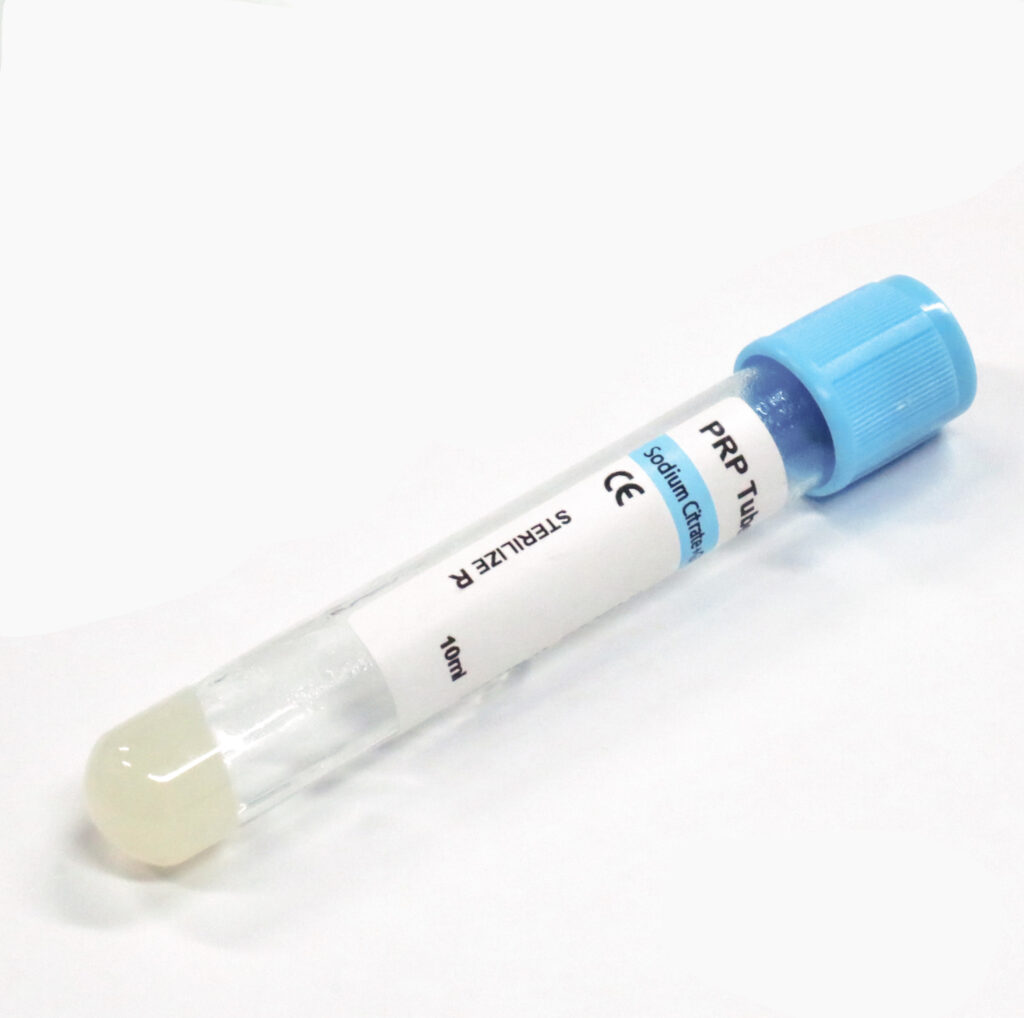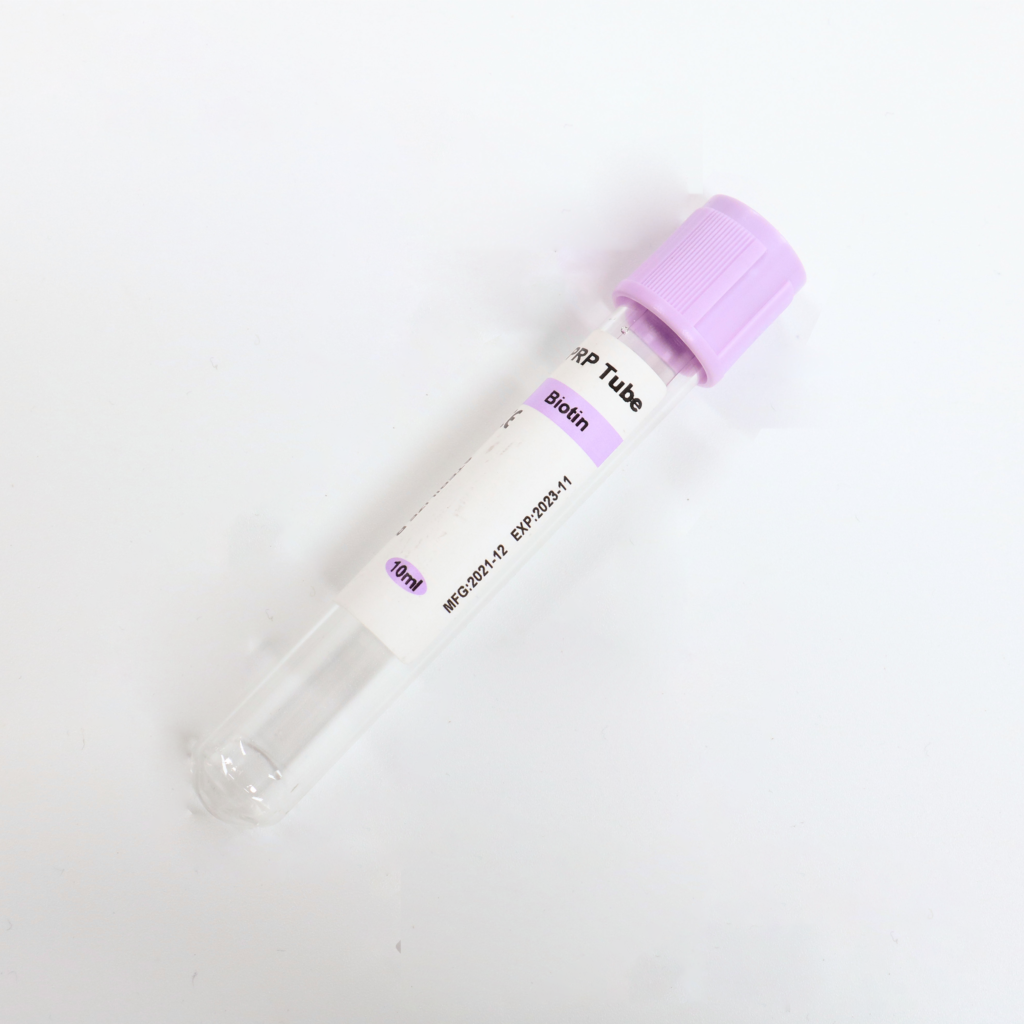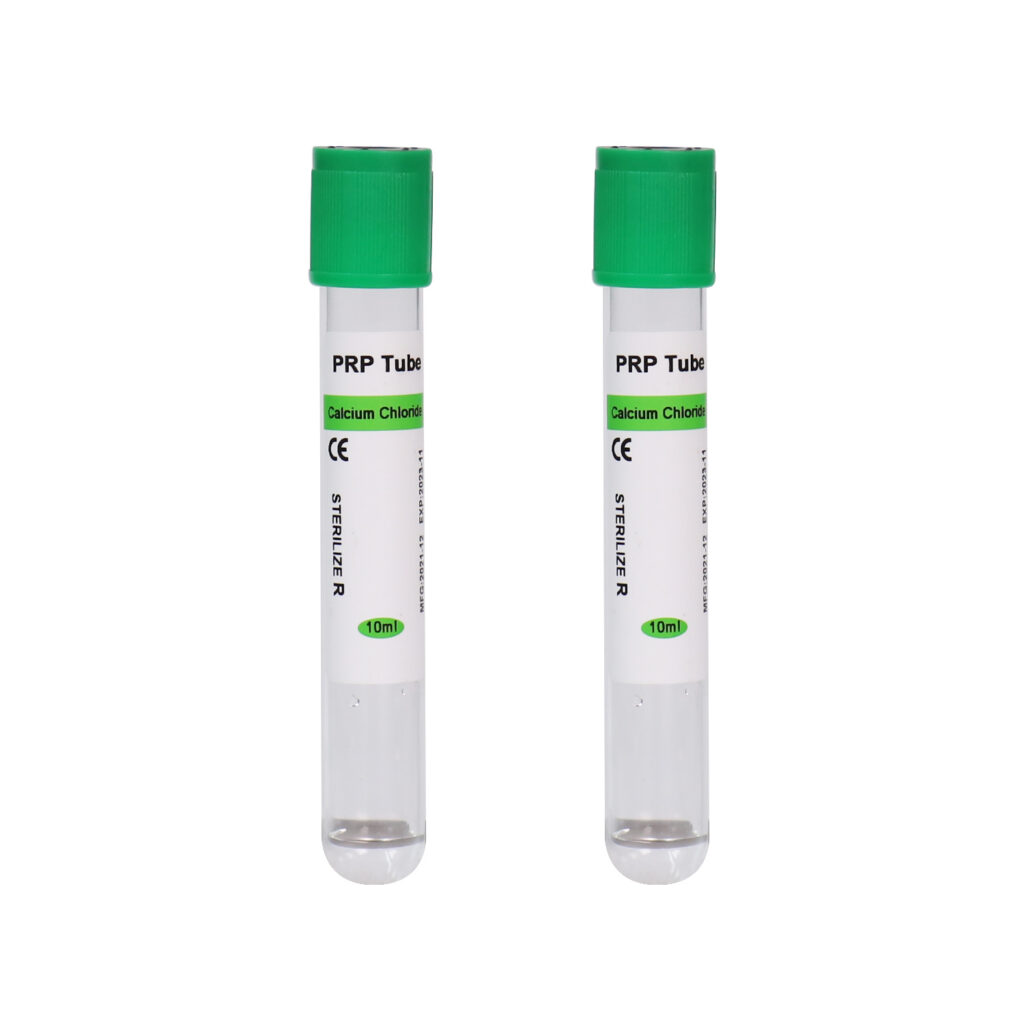PRP (Platelet-Rich Plasma):
PRP (Platelet-Rich Plasma) is a popular non-surgical treatment option for hair loss, skincare, aesthetics, and orthopedic joint issues. The PRP tube is the primary tool for collecting and processing blood in PRP treatment. However, not all PRP tubes are the same. There are now many different additives for PRP tubes, each with unique features and benefits.
Types of PRP Tubes:
ACD-A PRP Tube:

Anticoagulant Acid Citrate Dextrose Solution, commonly known as ACD-A or Solution A, is a nonpyrogenic, sterile solution. This anticoagulant produces platelet-rich plasma (PRP) with PRP Systems for extracorporeal blood processing. Anticoagulants that are citrate-based use the ability of the citrate ion to chelate ionized calcium present in the blood to prevent blood coagulation and form a non-ionized calcium-citrate complex.
Additive: ACD-A (Acid Citrate Dextrose Solution A)
Function: ACD-A acts as an anticoagulant by binding calcium ions in the blood, preventing calcium-dependent clotting. Dextrose provides nutrition to blood cells, maintaining their viability.
Advantages:
Efficient Anticoagulation: Ensures that blood does not clot during collection and processing, maintaining the integrity and flow of the sample.
Cell Protection: Dextrose provides energy to blood cells, helping to maintain their health and function.
Wide Application: Due to its adequate anticoagulation and cell protection properties, ACD-A tubes are widely used in fields such as plastic surgery, sports medicine, and dermatology for PRP therapy.
Applications:
PRP Therapy: Used for treating arthritis, tendon injuries, soft tissue injuries, and more.
Aesthetic Medicine: Used for skin regeneration, reducing wrinkles, and treating acne scars.
Dentistry: Used for tooth repair and regeneration treatments.
Sodium Citrate PRP Tube:

Sodium citrate is an anticoagulant added to the blood to prevent clotting during the PRP preparation process. The gel is used to separate the platelets from other blood components and concentrate them in the PRP. Biotin is a vitamin added to the PRP to enhance the growth and regeneration of hair follicles. PRP therapy injects concentrated platelets into the scalp to stimulate hair growth and improve hair density. It is a non-surgical, minimally invasive treatment option for hair loss.
Additive: Sodium Citrate
Function: Sodium citrate prevents blood coagulation by binding with calcium ions, ensuring the blood sample remains fluid during collection and processing.
Advantages:
Stable Anticoagulation: Effectively and stably prevents blood coagulation, ensuring that blood components are not destroyed during processing.
Good Biocompatibility: Harmless to the human body, does not cause adverse reactions, and is suitable for various blood processing procedures.
Cost-Effective: Compared to other anticoagulants, sodium citrate is relatively economical.
Applications:
Laboratory Research: Widely used for blood sample collection and processing.
Clinical Diagnostics: Suitable for clinical tests and diagnostics requiring large amounts of blood samples.
PRP Therapy: Used in PRP therapies requiring efficient anticoagulation.
Biotin PRP Tube:

Biotin PRP is a biotin-enhanced platelet enrichment therapy that treats hair loss and promotes growth. The treatment involves injecting platelets rich in growth factors and proteins from the patient’s blood into the scalp to stimulate hair follicle growth and regeneration. The addition of biotin can enhance the secretion of the growth factor of platelets and the effect on hair growth. The treatment is safe, non-invasive, and has no side effects, making it suitable for men and women with hair loss of different ages.
Additive: Biotin
Function: Biotin, a form of vitamin B7, is not a traditional anticoagulant but is used in some PRP preparations to improve cell health and function.
Advantages:
Promotes Cell Health: Biotin is an essential vitamin for cell metabolism and enzyme function, aiding cell health and vitality.
Enhances PRP Effectiveness: By increasing cell metabolic activity, biotin can potentially improve the effectiveness of PRP treatments.
Non-Toxic: As a water-soluble vitamin, biotin is harmless to the human body.
Applications:
Aesthetic Medicine: Used for PRP treatments aimed at skin regeneration and hair health.
Plastic Surgery: Assists in soft tissue repair and regeneration.
Comprehensive Health Treatments: Used in treatments requiring overall cell health improvement.
Calcium Chloride PRP Tube:

Use calcium chloride as a chemical to prepare platelet-enriched plasma (PRP). It is a colorless crystal with strong hygroscopicity and solubility. Calcium ions are essential in promoting platelet aggregation and activation during PRP preparation. Therefore, adding an appropriate amount of calcium ions can enhance the biological effect of PRP. Medical professionals widely use calcium chloride PRP tubes in fields such as orthopedics, dentistry, and plastic surgery to promote tissue repair and regeneration.
Additive: Calcium Chloride
Function: Calcium chloride provides additional calcium ions to promote the coagulation process. Use it typically at the final stage of PRP preparation to activate the release of growth factors from platelets.
Advantages:
Activates Platelets: Providing calcium ions promotes the release of growth factors from platelets, enhancing the therapeutic effects of PRP.
Enhances Repair Ability: Accelerates blood coagulation, aiding wound healing and tissue repair.
Control the amount and timing of activation, making it suitable for treatments that require precise control of platelet activation.
Applications:
Sports Medicine: Used for the treatment of tendon and ligament injuries.
Plastic Surgery: Helps in the repair of soft tissue and bones.
Dermatology: Used to promote skin regeneration and reduce scarring.
